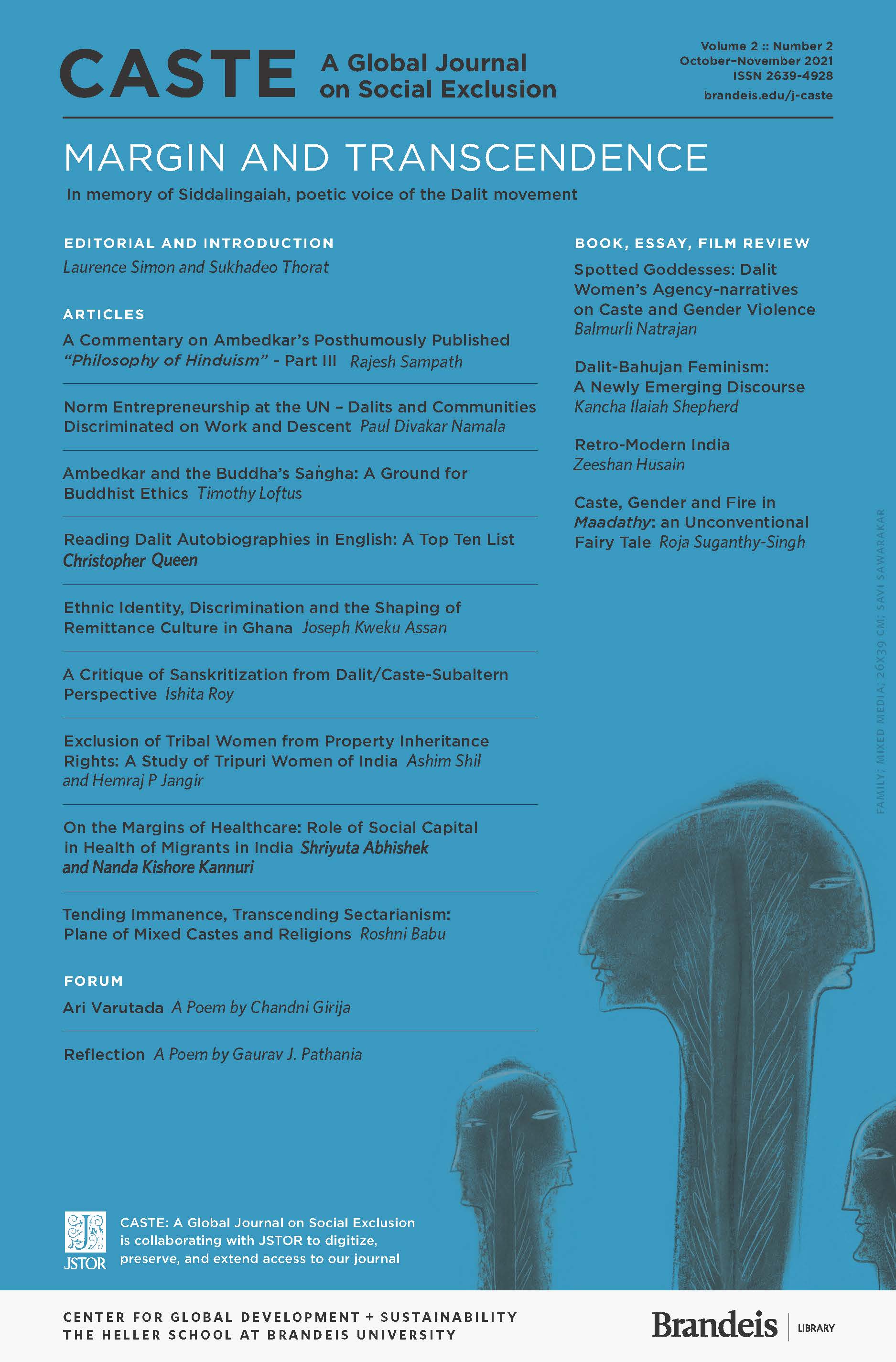Exclusion of Tribal Women from Property Inheritance Rights: A Study of Tripuri Women of India
Main Article Content
Abstract
The Tripuri tribe from the state of Tripura constitutes around 50 percent of the total tribal population and can be found in all eight districts of the state. The tribe follows its own culture and tradition in terms of marriage and other customary practices. This study investigates the role of gender in inheritance of property among the Tripuri tribe and how Tripuri women are excluded from ownership of property. It also attempts to discover how property ownership affects their income and position in the household. The study has been conducted in the districts of West Tripura and Dhalai. Focus Group Discussion and interview schedules are employed as methods for collection of data.
Results show that while 20 out of 54 married women from rural areas of West Tripura have inherited property, only 2 out of 13 married women have inherited property in the urban area. In comparison with West Tripura, Dhalai features a low ratio among women in inheriting property (only 4 out of 38 married women). A few causes include low level of literacy, slow urbanization and less inter-community marriages. The reasons for not inheriting property include: a woman failing to live up to the concept of a ‘good sister’ in the brother’s eyes, son needs property to care for parents, cost of marriage is borne by brother or parents so no right to claim, and to avoid unnecessary conflict in the family. In this manner, societal perceptions prevent women from claiming the legitimate share of their ancestral property.
Downloads
Article Details
A. CORRESPONDING AUTHOR’S GRANT OF RIGHTS
The Corresponding Author grants to the Journal, during the full term of copyright and any extensions or renewals of that term, the following:
- An irrevocable non-exclusive right to reproduce, republish, transmit, sell, distribute, and otherwise use the Work in electronic and print editions of the Journal and in derivative works throughout the world, in all languages, and in all media now known or later developed.
- An irrevocable non-exclusive right to create and store electronic archival copies of the Work, including the right to deposit the Work in open access digital repositories.
- An irrevocable non-exclusive right to license others to reproduce, republish, transmit, and distribute the Work under the condition that the Authors are attributed. (Currently this is carried out by publishing the content under a Creative Commons Attribution 4.0 license.)
Copyright in the Work remains with the Authors.
B. CORRESPONDING AUTHOR’S DUTIES
- When distributing or re-publishing the Work, the Corresponding Author agrees to credit the Journal as the place of first publication.
- The Corresponding Author agrees to inform the Journal of any changes in contact information.
C. CORRESPONDING AUTHOR’S WARRANTY
The Corresponding Author represents and warrants that the Work is the Authors’ original work and that it does not violate or infringe the law or the rights of any third party and, specifically, that the Work contains no matter that is defamatory or that infringes any literary or proprietary rights, intellectual property rights, or any rights of privacy. The Corresponding Author also warrants that he or she has the full power to make this agreement, and if the Work was prepared jointly, the Corresponding Author agrees to inform the Authors of the terms of this Agreement and to obtain their written permission to sign on their behalf. The Corresponding Author agrees to hold the Journal harmless from any breach of the aforestated representations.
D. JOURNAL’S DUTIES
In consideration of the Author’s grant of rights, the Journal agrees to publish the Work, attributing the Work to the Authors.
E. ENTIRE AGREEMENT
This agreement reflects the entire understanding of the parties. This agreement may be amended only in writing by an addendum signed by the parties. Amendments are incorporated by reference to this agreement.
